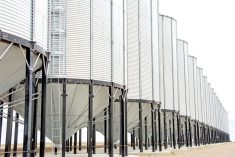CNS Canada — Mustard spot prices are trending lower, with limited demand for the commodity as harvest progresses.
Weather conditions may have curbed yield potential, to an extent, though production is still expected to be large, according to one market participant.
Bids for mustard have dropped from the levels seen in July and August into September, said Walter Dyck of Olds Products.
“Prices for all three types of mustard have really come off, and I think demand for the most part, has also come down,” he said.
Read Also

U.S. grains: Soybean futures hover near 15-month high after China buys U.S. cargoes
Chicago Board of Trade soybean futures hovered near a 15-month high on Wednesday after trade sources said China made its first purchases from the autumn U.S. harvest ahead of a summit between leaders Donald Trump and Xi Jinping.
Delivered elevator mustard is between 29 and 31 cents per pound for yellow, 28-35 for brown, and 27-29 for oriental, according to data from Prairie Ag Hotwire.
Contract mustard is likely being delivered right now, which limits room to bring in spot mustard, Dyck said.
Harvest progress is also a feature as states such as North Dakota and Montana are mostly wrapped up and progress continues in Canada.
Saskatchewan’s harvest progress is close to 75 per cent completed, Dyck said, but Alberta is lagging at 25 per cent.
“There’s a lot going on as we speak, but I know there’s some rain in the forecast for this week, so that might delay it again,” he said.
Adverse weather may have trimmed yields, Dyck said, but production is still expected to be mostly in line with Statistics Canada estimates.
“There’s been some good yields, but you know, hail and wind has also taken a toll on what could have been,” Dyck said.
On-average yields should be close to 1,000 lbs. per acre for yellow mustard, and 1,200 lbs. for brown and oriental, he said.
StatsCan expects yield to reach 1,078 pounds per acre for all types of mustard, according to production estimates released in August.
StatsCan’s model-based production survey, released Tuesday, estimated the mustard crop at 166,300 tonnes — down from the August survey-based estimate of 250,500 tonnes, but still up from the 123,400 tonnes grown last year.
— Jade Markus writes for Commodity News Service Canada, a Winnipeg company specializing in grain and commodity market reporting.












